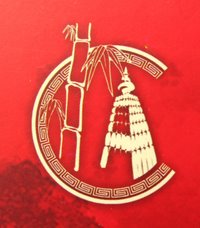Kolkata , May 14 2014 , page 6
Study of Kolkata's culture curry
Students From Denmark And Ahmedabad Document Chinese, Anglo-Indian Heritage
Architecture students from Denmark and all over India are in the city to study and document the Chinese settlement at old Chinatown in Territi Bazaar. The team will also photograph and sketch Bow Barracks, a nearly century-old Anglo-Indian hub.
Led by Kamalika Bose, assistant professor, faculty of design at India's premier architecture institute, Centre for Environmental Planning and Technology (CEPT) University, the 27 students of whom 12 are from Aarhus School of Architecture in Denmark and the rest from CEPT, Ahmedabad, will study traditions of the two communities reflected through cultural and occupational practices, food habits, dress and architecture. They will also study how time has impacted the communities, altered the socio-economic circumstances and eroded the cultural heritage.
“The eclectic history of diverse immigrant communities shape and leave an indelible impression on the socio-cultural nerve of a city . The cosmopolitan character of a city is demonstrated in the multitude of ethnic enclaves and their architectural diversity found within such historical urban quarters. Kolkata serves as an exemplary case of the proverbial `melting pot' of Armenians, Chinese, Jews, AngloIndians, and Greeks, among others, who migrated to the city from 18th century onwards,“ explained Bose, the lead instructor at CEPT summer school in Kolkata.
The three-week programme is designed to expand the students' understanding of culture and community and their contemporary significance through documentation, observation and analysis.
The study selected two ethnic settlements--old Chinatown and Bow Barracks--located in close proximity to further compare and cross-refer cultural strands that inter weave to form Kolkata's composite ethnic heritage.
The team will look at Bow Barracks that was built in 1918 for soldiers in World War I and has since been home to AngloIndians.
Prior to Independence, Kolkata was the largest and most permanent home for this community of mixed descent, with over 100 families in the neighbourhood now.
The Chinese community in Kolkata, on the other hand, has a 250-year-old history where old Chinatown forms the most distinctive settlement in South Asia.
It continues to have a population of over 2,000 comprising people of both Cantonese and Hakka Chinese descent.
The rich-built heritage of the Chinese is, however, poorly documented as Bose discovered during her consultancy work for the Cha Project, an initiative to preserve Kolkata's rich history , not glassed up in a museum but tangible, living heritage.
“Kolkata is architecturally under-studied. I realized the paucity of a base map while surveying old Chinatown. One of the first tenets of conservation is to have good sets of drawings, documenting each building that is of heritage value.
This has to be done in a manner that involves the community so that they can then use these tools for the revival of old Chi natown,“ said Bose.
Apart from visits to Chinatown and Bow Barracks, the programme includes a panel discussion on urban heritage, a visit to a former Danish colony in Serampore and a French colony in Chandannagore and a visit to the lime workshop at the Scottish Cemetery in collaboration with the Kolkata Scottish Heritage Trust.
“It is extremely exciting for architecture students from Denmark to have the chance to experience two foreign cultures -Indian and Chinese -at the same time and learn how to benefit from the tremendous wisdom and richness embedded in both. In a globalized world, it is of utmost impor tance that we can distinguish and cherish the cultural diversity we live in. Denmark and India share a short period of common history . We are curious to find and identify some common traces of the past on a visit to Serampore next week,“ said Thomas Hilberth, associate professor, Aarhus School of Architecture, Denmark, and coinstructor of the programme.
Danish student Thea Dahl Orderud is bowled by Kolkata.
“The city's cultural heritage peeks out from the everyday life of citizens; a way of living where the physical borders of houses is extended by its social activities. Never before have I experienced anything like this,“ she remarked.
Prathyusha Ravi, who is doing her post-graduation in architecture and conservation at CEPT, felt that Kolkata had been a resilient canvas expressing unique painting of architecture and settlements of British, Chinese, Danish and Armenians.
“As architects, we study patterns that make the painting look perfect but contradicting imperfections add great value and beauty to the city . As citizens living in the canvas, it is in our hands to protect this great inheritance from fading.
I hope this documentation will be a stepping stone for the same,“ she added.
Subhro Niyogi TNN











